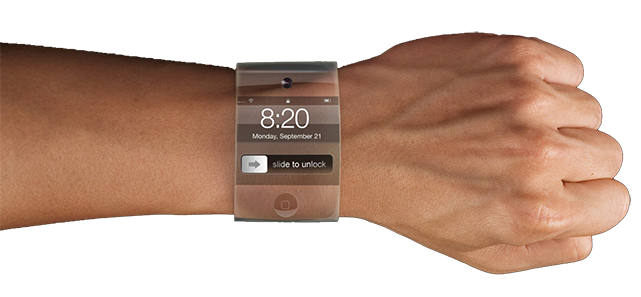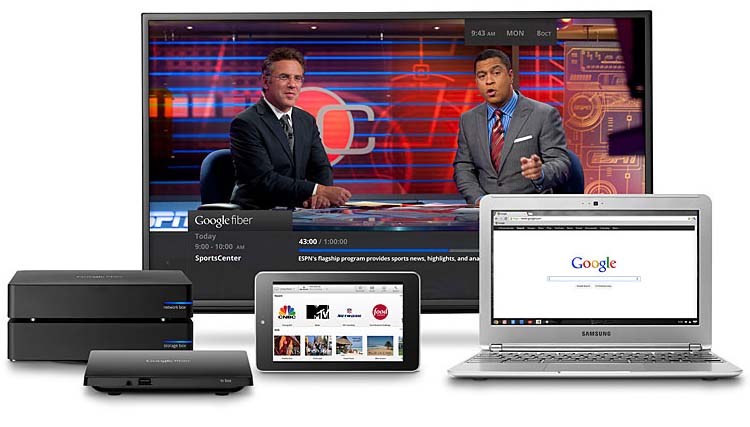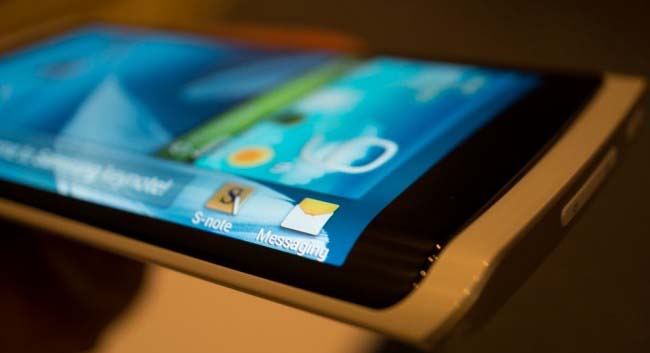1. Google Glass. This week, Google chairman Eric Schmit said the company's smart specs will be commercially available this year. Google Glass are a pair of wi-fi enabled, camera-equipped glasses the company thinks will go mainstream. The wearer sees a simple interface superimposed the lense, and can say simple voice commands, such as "take a picture" to enact smartphone-like features (including the ability to upload photos and video live).
If there's no wi-fi, you can tether to a smartphone connection.
Depending on where you sit, it's the next step in always-on connectivity and life-blogging, or the ultimate privacy nightmare. Apple is said to be working on a similar prototype.
The price tag is expected to be around $Us1500. See more on Google's official glass page here.

Life through Google Glass.
2. Apple smart watch: Persistent industry rumours have Apple working on a Dick Tracy-style smart watch, for release in 2014. A smart watch could be more immediately accessible than a smartphone - but analysts mainly see Apple trying to find a completely new product line. as its profits from iPhones and iPads start to fall.
Microsoft is also said to have a smartwatch in the works.

ABOVE: Persistent rumours Apple is working on an "iWatch" have sparked a host of artists' impressions of what it might look like - including this one by Apple Insider.
3. Google Fibre: Austin, Texas is the latest US city to get Google fibre as the search giant continues to rollout its own (so far small, experimental) broadband network.
This really turns things on their head. The traditional telco wisdom is that Google (and Microsoft and Netflix and Viber et al) are freeloaders. They offer voice, video and content services over networks run by fibre and phone companies that don't get to clip the ticket.
But Google Fibre represents a content and software service provider investing boots-and-all in real-world infrastructure.
And it's offering some pretty attractive rates, too: a basic service is free (bar a $US300 connection charge).
$US70 a month gets you gigabit (or 1000Mbi/ts) broadband (here, Crown Fibre tops out at 100Mbit/s, with entry level plans offering 30Mbit/s speed; most copper/DSL connections offer 10Mbit/s or less).
And $US120 a month buys you gigabit broadband plus a Google Fibre set-top box that allows you to get HD TV channels delivered over broadband, and 1 terabyte (1000GB) of online storage. The TV content offered is no Ziln TV marginal mix but all the mainstream channels (see a list here; some premium channels, like HBO, cost extra).

ABOVE: A Google Fibre setup with all the trimmings.
Why would Google stop freeloading, and start investing in fibre?
One, for total control. Movie and TV streaming service Netflix has been hampered by many ISPs offering too slow speeds full-top, or shaping data traffic so that users of such "freeloading" services suffer poor performance, even if they're on a snappy fibre connection. With Google Fibre and Google Fibre TV all one one closed system, there are no worries about roadblocks. Similarly, with that 1 terabyte of online storage, there are no data cap worries if you want to go full-force using Google's various online, ad-support file sharing, voice and other services.
The only question now is whether Google is creating a few showcase rollouts (so far in Provo, Utah; Kansas, Missouri and now Austin, with Silicon Valley to follow) in an effort to nudge fibre and telco network providers in the right direction - or whether it's scheming to take traditional phone companies out of the game.
Google rolling out its own fibre in NZ would constitute overbuild. But, hey, Google - feel free to become a UFB retailer and offer us some juicy deals.
4. An Apple television: We've already got Apple TV (a wi-fi box that lets you stream movies and other ITunes content to television). Now, the inside word is that Apple is going to make its own television proper - and release it before the end of 2013.
A move into the brutally-competitive TV market would be a bold play, but also a chance to really push the TV series and movie content availalble through iTunes (in most countries outside NZ). And it would provide a chance for CEO Tim Cook to move out of Steve Jobs' shadow.
Don't look for any new technology, but do look for some slick design, a user-friendly interface and, beyond all else, a big push for iTunes video content, and that of partners Netflix and Hulu - and that's something that could really shake up today's moribund regional broadcast and pay TV content monopolies.

BEND IT LIKE BECKHAM: A prototype flexible smartphone display demo'd by Samsung.
5. Smartphones with flexible displays. Korean phone maker LG has promised a model with a flexible display by year's end. We're not talking a bendy phone - at least not yet. Today's battery and circuitry technology won't allow it. But an OLED display can be flexed and wrapped as another Korean company, Samsung, demonstrated at CES.


